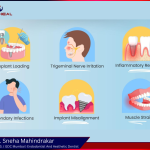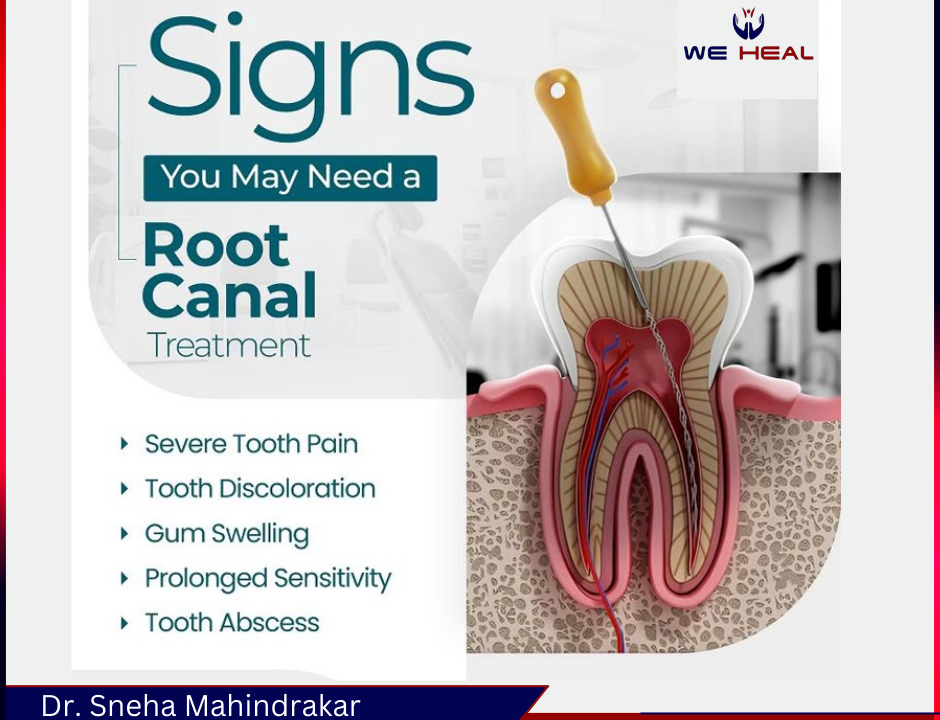
Can Dental Implants Cause Headaches?
August 19, 2024
Sugar: The Sneaky Villain in Your Smile Story
September 2, 2024An overbite is a common dental condition where the upper teeth excessively overlap the lower teeth when the jaws are closed. If left untreated, it can lead to various oral health issues such as tooth decay, gum disease, and jaw problems. In more severe cases, a deep overbite may even affect the facial structure. In this comprehensive guide, we will explore different methods to correct an overbite and achieve properly aligned teeth and a healthy mouth.
Identifying the Types of Overbites
Before delving into how to fix an overbite, it’s essential to understand the various types and severity levels. Overbites can be classified into the following categories:
1. Slight Overbite
A slight overbite, also known as a minor overbite, typically requires minor orthodontic treatment. Traditional braces or clear aligners like clear plastic aligners can be effective in these cases.
2. Deep Overbite
A deep overbite, often referred to as a vertical overbite, occurs when the overlap between the upper and lower teeth is more pronounced. It may necessitate more comprehensive treatment options like orthodontic braces or orthognathic surgery.
3. Severe Overbite
For more severe overbites, including skeletal overbite or recessive chin, orthognathic surgery and jaw realignment are potential solutions.
Understanding the Causes of Overbites

Overbites, while common, can have various underlying causes that contribute to their development. Understanding these factors is crucial in addressing and preventing overbites effectively.
1. Genetics
Genetics play a significant role in determining your dental and facial structure. If one or both of your parents have an overbite, you are more likely to inherit this trait. It’s not uncommon for overbites to run in families, as they can be genetically predisposed.
2. Oral Habits
Certain oral habits, particularly during childhood, can contribute to the development of an overbite. These habits include:
– Thumb Sucking: Prolonged thumb-sucking can put pressure on the front teeth, pushing them forward and potentially causing an overbite.
– Pacifier Use: Like thumb-sucking, extended use of pacifiers can lead to similar dental effects, including overbites.
– Bottle Feeding: Prolonged bottle feeding, especially with a bottle containing sweetened liquids, can impact tooth alignment, increasing the risk of an overbite.
– Tongue Thrusting: Habitual tongue thrusting, where the tongue pushes against the front teeth during swallowing or speaking, can contribute to the misalignment of the teeth and the development of an overbite.
3. Jaw Problems
Issues related to jaw development can also play a role in overbite formation. The most common is a size discrepancy between the upper and lower jaws. When the upper jaw is larger than the lower jaw, an overbite can develop as the upper teeth overlap the lower teeth.
4. Untreated Overbite
One of the most significant contributors to overbites is simply leaving them untreated. Over time, an untreated overbite can worsen, leading to more severe oral health issues, including tooth decay, gum disease, and jaw problems.
Understanding the underlying causes of your overbite is essential for determining the most suitable treatment approach. Whether it’s addressing genetic factors, breaking oral habits, or correcting jaw problems, early intervention is key to preventing the progression of an overbite and maintaining a healthy, properly aligned smile. If you or your child exhibits signs of an overbite, consult with a dentist or orthodontist for a comprehensive evaluation and tailored treatment plan.
Overbite and Tooth Decay
An overbite isn’t merely a cosmetic concern; it can have significant implications for your oral health. One of the most concerning connections between overbites and oral health is the increased risk of tooth decay. Here’s how an overbite can lead to this common dental problem:
Accelerated Tooth Wear
An overbite will make your teeth wear down more quickly. This happens because the upper teeth excessively overlap the lower teeth, causing them to grind against each other. This grinding action applies constant pressure and friction to your teeth, wearing down the tooth enamel faster than is normal. Over time, the enamel’s protective barrier weakens, leaving your teeth more vulnerable to damage.
Enamel Erosion and Increased Risk of Decay
As enamel erosion progresses due to the overbite, the hard outer layer of your teeth becomes thinner, making your teeth more susceptible to damage. With weakened enamel, your teeth lose their first line of defense against harmful bacteria, acids, and plaque buildup. This puts you at an increased risk of decay, as cavities are more likely to develop when the enamel is compromised.
Tooth Sensitivity
Enamel erosion doesn’t only lead to tooth decay; it can also result in tooth sensitivity. The dentin, a sensitive layer beneath the enamel, becomes exposed when the enamel is worn down. This can cause discomfort or pain when consuming hot or cold foods and beverages, making everyday activities less enjoyable.
Overbite and Cavities
In essence, an overbite could be the cause of your cavities. The continuous wear and tear on your teeth, combined with enamel erosion and increased vulnerability to decay, create the perfect storm for cavities to develop. If left untreated, these cavities can lead to more severe oral health issues, such as gum disease and even the potential loss of teeth.
Recognizing the relationship between overbites and tooth decay is vital, as it underscores the importance of addressing overbite issues. By seeking appropriate treatment, you not only enhance the aesthetics of your smile but also safeguard your oral health and prevent cavities. Whether through orthodontic treatment like Invisalign or more complex interventions like orthognathic surgery, correcting your overbite can significantly reduce the risk of tooth decay, protect your enamel, and ultimately promote a healthier, happier smile.
Overbite-Gum Disease Connection
Gum disease, or periodontal disease, is a common oral health issue that can be influenced by various factors, and an overbite is one of them. Understanding how an overbite can contribute to gum disease is crucial for maintaining your overall oral health.
1. Overbite-Induced Gum Problems
An overbite can create conditions conducive to gum disease in several ways:
- Misalignment: When the upper teeth significantly overlap the lower teeth, it can lead to difficulty in cleaning between the teeth. This can result in the accumulation of plaque and bacteria, increasing the risk of gum inflammation and infection.
- Increased Pressure: The excessive pressure placed on certain teeth due to an overbite can cause those teeth to press against the gums. This pressure can damage the gum tissue, making it more susceptible to infection.
- Difficulty in Proper Cleaning: Cleaning teeth with a severe overbite can be challenging. It may be harder to reach certain areas with a toothbrush or floss, which can lead to the buildup of plaque and tartar, further increasing the risk of gum disease.
2. Gum Inflammation
One of the initial signs of gum disease is gum inflammation or gingivitis. In the presence of an overbite, gum inflammation can be more pronounced. The inflammation is often due to the irritation caused by the misalignment of teeth and the resulting challenges in maintaining proper oral hygiene.
3. Progression to Gum Disease
If left untreated, gum inflammation can progress to gum disease. As the condition worsens, the gums may recede, pockets can form between the teeth and gums, and the bone supporting the teeth can be affected. These developments are more likely in individuals with overbites due to the added stress on the gums and teeth.
4. Overbite Treatment and Gum Disease Prevention
Preventing gum disease when you have an overbite involves addressing both the alignment issue and maintaining excellent oral hygiene practices. Overbite correction through methods like Invisalign, traditional braces, or orthognathic surgery can help alleviate the pressure on the gums and improve the alignment of the teeth.
In addition to seeking treatment for your overbite, it’s essential to:
- Brush and floss regularly, paying extra attention to the areas affected by the overbite.
- Visit your dentist or orthodontist for regular check-ups and cleanings to detect and address any issues early.
- Consider orthodontic devices that can facilitate better oral hygiene while treating the overbite.
By taking proactive steps to manage your overbite and maintaining good oral hygiene, you can reduce the risk of gum disease and enjoy a healthier, disease-free smile.




